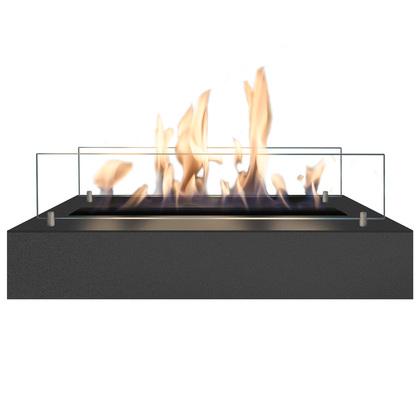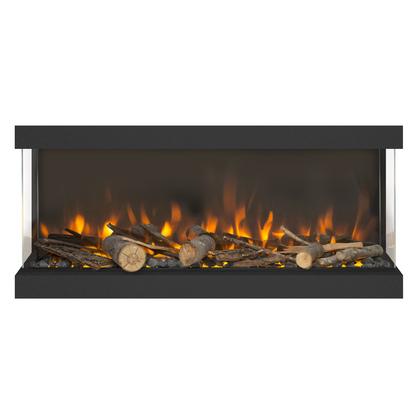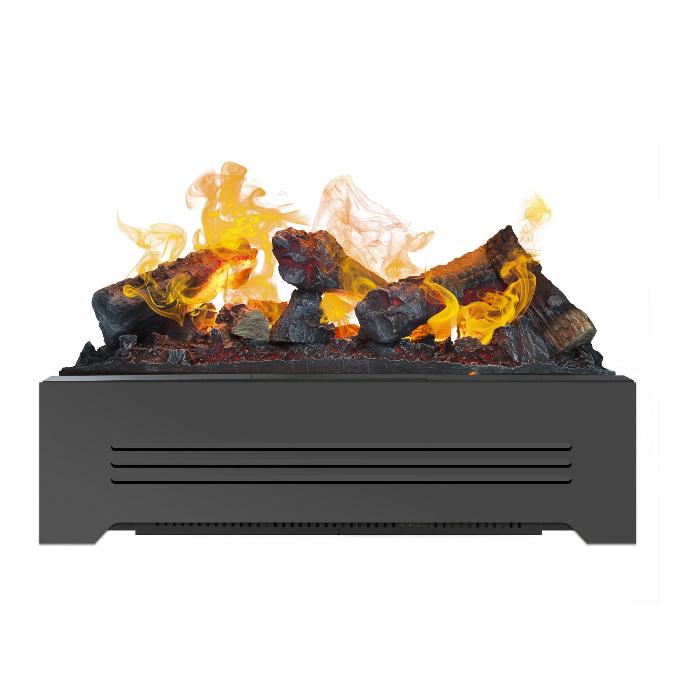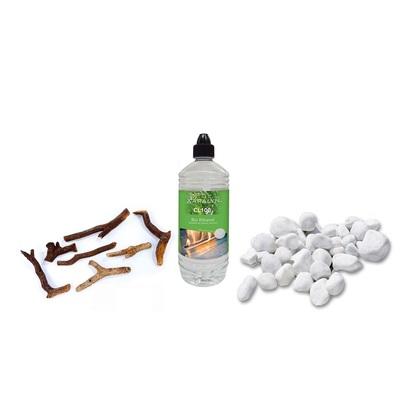Choose a Efficient, Cleaner, and Safer Xaralyn Fireplace
We are here to convince you of our Fire System
Ethanol is derived from petroleum. This is also known as synthetic ethanol. Bio-ethanol, on the other hand, is obtained from plants. Bio-ethanol is generally slightly less pure. The natural composition of bio-ethanol is 96% ethanol and 4% water. During combustion, both components transform into H2O (water) and CO2 (carbon dioxide). Therefore, using ethanol or bio-ethanol as fuel is completely clean. The CO2 part is absorbed back by plants. Thus, we refer to bio-ethanol as a renewable fuel.
Clean, fresh bio-ethanol emits minimal odor when burned. Ethanol recovered from industry (often used in cleaning operations) is cheaper but may give off a stronger smell.
Bio-ethanol or bio-alcohol is not without its hazards. Burning bio-ethanol in an open container, known as an open burner, is outright dangerous. These burners are usually identifiable by the way they are refilled, at the same location where the flames emanate.
The danger with these types of burners is fuel, the ethanol, spilling. To mitigate this hazard, pure bio-ethanol can be mixed with a substance to make it more viscous. While this gel-like fuel is safer to use, it leaves an unpleasant-smelling residue and emits a black soot. Bio-ethanol gel or fuel gel is essentially ethanol with an additive. The use of gel in this type of fireplace also leads them to be called gel fireplaces.
Bio-ethanol is more affordable than bio-ethanol gel. From an economic standpoint, bio-ethanol is being increasingly preferred. The use of ethanol in open burners (gel fireplaces) is not only dangerous but also less sustainable. Because the flames in an open burner have more access to oxygen, they can consume up to 4 times more ethanol than a closed burner..
The advantage of a gel fireplace lies primarily in its lower purchase price. However, if you plan to use the fireplace more than a few times a year, it's more cost-effective to opt for a fireplace that is more efficient in consumption, cleaner in combustion, and safer.
A KiWa, TüV, or CE logo on a bio-ethanol fireplace provides assurance about production standards. The product adheres to a minimum norm. Unfortunately, these logos do not speak to the safety of the combustion system. Within Europe, several standards are established for a safe ethanol burner, the EN 16647:2015 certification.
Xaralyn employs a patented combustion system in which ethanol is absorbed into a ceramic stone like a sponge. This system ensures that ethanol can only be released through evaporation. Spillage of ethanol is impossible with this system. An additional benefit is that the flames receive less oxygen, resulting in less bio-ethanol consumption and a more beautiful (calmer) burn. This ceramic burner meets the EN 6647:2015 standard.
Thus, a ceramic burner is not only cleaner and safer but also more cost-effective in the long run.



